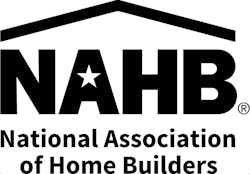NAHB Chair Shares How Association is Responding to COVID-19
In three weeks, 101 recorded U.S. cases of COVID-19 ballooned to more than 33,000. As of March 30, the country has more than 143,000 confirmed cases—more than any other single country. Streets are empty, businesses are closed. People can’t go to work, or congregate too closely. One in five Americans have been ordered to stay home, according to reporting from The New York Times. Goldman Sachs projects the country’s GDP will drop 24% next quarter as a result. That would be the worst GDP drop in U.S. history, by a lot.
The outbreak’s impact on everyday normalcy in the U.S. is unprecedented, as is it’s impact on the remodeling industry. There’s no guide for how to navigate a remodeling business through a global pandemic the scale that we’re experiencing. With that in mind, we’ve reached out to a number of remodelers and industry organizations to get a better understanding of how COVID-19 has impacted their markets and how they’re responding as a result.
We will be publishing their responses in a series of posts that will extend the length of the crisis, however long that proves to be.
National Association of Home Builders
Responses come from NAHB 2020 Chairman Dean Mon.
What impact is COVID-19 having on the remodeling industry, and construction industry at large?
For the most part, remodelers are facing the same struggles faced by the construction industry at large. Over the last two weeks, there has been growing concern about the economic stress related to coronavirus mitigation efforts and social distancing. The recommended public health strategiesWhat is the association doing to help its members during this crisis? Any resources or recommendations for business owners?
NAHB is committed to seeing our members through this crisis. As we all know, this is not the first major storm our industry has weathered. All NAHB resources are available at nahb.org/coronavirus. There, NAHB members and non-members can access information on economic forecasts, business continuity information, consumer information, and materials to assist NAHB’s state and local partner associations. NAHB has also conducted a series of webinars to inform members of the association’s resources, policy advocacy efforts, and the industry outlook from NAHB’s Chief Economist Robert Dietz. In the near-term, remodelers should prepare for delays in approvals and inspections, check on their sub-contractors and workforce, and watch their cash reserves. Once efforts to mitigate the spread of the coronavirus are relaxed, housing should be set for a rebound, given low mortgage rates and pent-up demand.
What is the association hearing from its members regarding COVID-19?
Right now, the best thing that members are doing is staying involved with the Association. NAHB has hosted webinars and virtual townhalls that have helped members to connect with one another and NAHB staff. When we work together and share ideas, the burden is lighter for all. One member recently recounted the experience of feeling stress and concern mount while trying to maintain business operations—for a business that employs many and provides a livelihood to many more. Knowing that NAHB had their back was a signal of hope to that member, with the feeling of a community—indeed, a family—supporting them through these uncertain times. Now is a time to be collaborative, to share resources and ideas, and to connect with one another (safely). Visit nahb.org/coronavirus to learn more about what NAHB is doing in the face of COVID-19, and to connect with other builders and remodelers like you.



